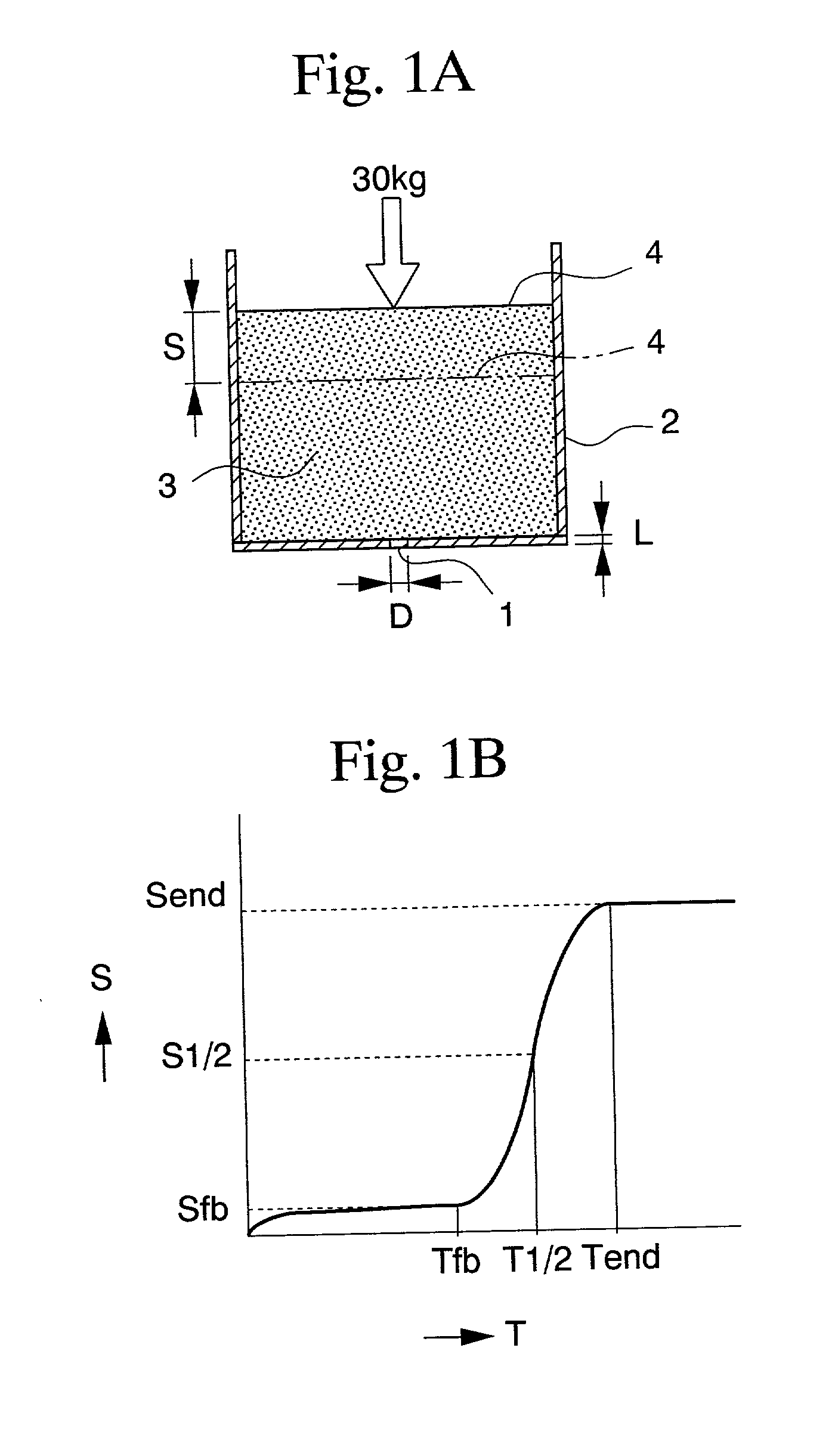Toner for electrostatic image development and method of producing the same
a technology of electrostatic image and toner, applied in the field of toner for electrostatic image development, can solve the problems of difficult charge control, vocs, adverse effects on human health,
- Summary
- Abstract
- Description
- Claims
- Application Information
AI Technical Summary
Benefits of technology
Problems solved by technology
Method used
Image
Examples
example 1
[0162] 545.5 parts of MB2 shown in Table 5, 115 parts of W4 shown in Table 3, 57.5 parts of methyl ethyl ketone, 29.0 parts of isopropyl alcohol as the phase inversion accelerator, and 25.8 parts of an aqueous 1 N ammonia solution were charged in a cylindrical vessel, followed by sufficient stirring. Subsequently, 230 parts of water were added and the liquid temperature was raised to 30.degree. C. Then, 44 parts of water were added dropwise while stirring, thereby performing phase inversion emulsification. The peripheral speed was 1.05 m / second. After the stirring was continued for 30 minutes, the rotation was terminated, and 400 parts of water were added.
[0163] A water slurry of particles was observed by an optical microscope. As a result, agglomerates of the releasing agent were not observed, and a flowing releasing agent was also not observed. The particle size distribution was measured by a Coulter Counter. As a result, Dv / Dn was 1.32, and the occurrence of coarse particles was ...
example 2
[0167] 545.5 parts of MB2 shown in Table 5, 115 parts of W4 shown in Table 3, 57.5 parts of methyl ethyl ketone, 28.0 parts of isopropyl alcohol as the phase inversion accelerator, and 26.5 parts of an aqueous 1 N ammonia solution were charged in a cylindrical vessel, followed by sufficient stirring. Subsequently, 230 parts of water were added and the liquid temperature was raised to 30.degree. C. Then, 44 parts of water were added dropwise while stirring, thereby performing phase inversion emulsification. The peripheral speed was 1.05 m / second. After the stirring was continued for 30 minutes, the rotation was terminated, and 400 parts of water were added.
[0168] A water slurry of particles was observed by an optical microscope. As a result, agglomerates of the releasing agent were not observed, and a flowing releasing agent was also not observed. The particle size distribution was measured by a Coulter Counter. As a result, Dv / Dn was 1.35, and the occurrence of coarse particles was ...
example 16
[0201] (Synthesis Example of Styrene-methacrylic Resin)
[0202] 200 parts of methyl ethyl ketone were charged in a reaction vessel and heated to 80.degree. C. Then, a mixture of 23 parts of acrylic acid, 180 parts of styrene, 54 parts of methyl methacrylate, 43 parts of 2-ethylhexyl acrylate, and 2.2 parts of "Perbutyl O" (produced by NOF Corporation) was added dropwise for two hours. After the completion of the dropwise addition, 0.6 parts of Perbutyl O were added to the reaction solution every four hours, and the reaction was continued at 80.degree. C. for 24 hours to obtain a resin. This resin was a non-crosslinked resin having these physical properties: acid value, 60; Tg, 70.degree. C.; and weight-average molecular weight, 50,000.
[0203] (Preparation Examples of Microparticles Containing Positive Charge Control Agent)
[0204] 90 parts of the styrene-methacrylic resin were dissolved in 122 parts of MEK (methyl ethyl ketone) and 111 parts of THF (tetrahydrofuran) were added, and, furt...
PUM
| Property | Measurement | Unit |
|---|---|---|
| temperature | aaaaa | aaaaa |
| temperature | aaaaa | aaaaa |
| temperature | aaaaa | aaaaa |
Abstract
Description
Claims
Application Information
 Login to View More
Login to View More - R&D
- Intellectual Property
- Life Sciences
- Materials
- Tech Scout
- Unparalleled Data Quality
- Higher Quality Content
- 60% Fewer Hallucinations
Browse by: Latest US Patents, China's latest patents, Technical Efficacy Thesaurus, Application Domain, Technology Topic, Popular Technical Reports.
© 2025 PatSnap. All rights reserved.Legal|Privacy policy|Modern Slavery Act Transparency Statement|Sitemap|About US| Contact US: help@patsnap.com

